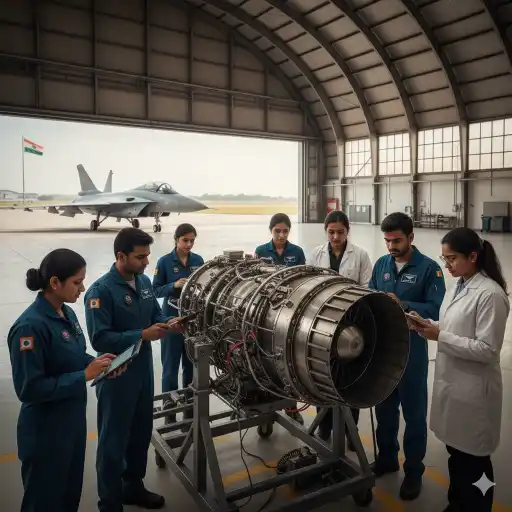India is preparing for a major leap in aerospace technology with a ₹65,400 crore ($7.44 billion) plan to design and produce fighter jet engines by 2035. The goal is simple, build engines at home, reduce imports, and make India self-reliant in one of defence’s most complex areas, aircraft propulsion.

This project is central to India’s long-term vision of powering its future fleet, from the advanced Tejas Mk2 and the stealth AMCA to upgraded fighters and unmanned combat aircraft. In the next decade, about 1,100 engines are expected to roll out under this mission.
At the heart of this effort is S. V. Ramana Murthy, Director of the Gas Turbine Research Establishment (GTRE), who is leading the charge to create an ecosystem that connects research labs, private firms, and international partners.
The Indian Air Force plans to expand to 42 squadrons by 2035 with nearly 450 new jets, many likely powered by engines made in India. It’s a transformation that boosts both defence strength and national confidence.
Talks with global players are already underway. The agreement with the US-based General Electric for its F414 engine, along with technology transfer, is a cornerstone of the plan. Meanwhile, the indigenous Kaveri engine, once seen as a stalled dream, is getting a revival, with upgraded versions expected to power future unmanned combat aircraft.
Collaboration remains key. France’s Safran, the UK’s Rolls-Royce, and the US’s GE are all exploring co-development of a fifth-generation engine for the AMCA, whose prototype could be ready by 2028.
In a first, India is inviting private companies to join the effort, sharing responsibilities with Hindustan Aeronautics Limited (HAL) and international partners.
Driven by Prime Minister Narendra Modi’s “Atmanirbhar Bharat” vision, this initiative reflects a major shift, from buying foreign technology to building it, improving it, and exporting it.
If executed well, this massive programme will do more than strengthen India’s skies. It will generate jobs, attract investments, and establish India as a serious global player in aerospace innovation.
